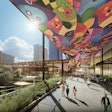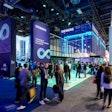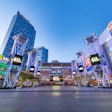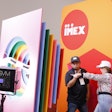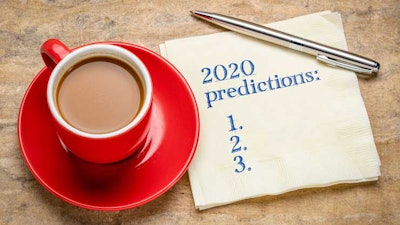
Face-to-face, live experiences are more important today than ever for developing your brand. Reports from within and outside of the industry all point to the rise of the experience economy. However, with the world around us constantly changing, it’s important that we’re agile and adapt accordingly.
The Demos to Watch
Millennials and Gen Zers are on the rise in more ways than one. The groups—aged between 23 and 38 (Millennials) and 4 and 22 (Gen Zers)—comprises 75 million and 61 million in the United States, surpassing the baby-boom generation. Not only are they a massive audience, but they are also gaining greater spending power as more are entering the workforce and working their way up the corporate ladder. They are passionate about the environment and social good, incredibly tech savvy and tuned into pop culture like no generation before them. While they favor sharable experiences over physical objects, they’ll only engage with brands who authentically prove they can add real value to their lives.
Tech Gets Personal
Which brings me to my next point: Personalization has been a buzz word in the marketing communications sector for several years now. However, predictive analytics represents a whole new frontier for our industry, as it enables us to understand how an idea or campaign will perform before it runs. Already at play in the digital space, this data-driven approach involves an analysis of past and present data sets about audience behaviors. It could, for example, be used to flesh out data about an attendees’ favorite experience zones, keynote sessions or even color preferences. This data is then carefully analyzed and used to inform the design and execution of future campaigns, ensuring maximum success against an established set of KPIs.
The Physical and the Virtual Collide
We’re living in a new kind of experience era today. While live interactions are innate to the human condition, with the introduction of personal devices like the smartphone, most of us now coexist in a simultaneous online and offline—or phygital state. This combination of live and digital is extremely potent, as it’s opened up a whole new realm of engagement opportunities.
This is why shareability should be seamlessly incorporated into every brand experience strategy in 2020. Highly sharable experiences enable audiences to continue to coexist in this phygital state they have become accustomed to, as they invite audiences to capture the elements that resonate with them most and then head online to share them with their networks. And herein lies the potency—they essentially become citizen journalists, reporting back and spreading the word about our events. The experience lives on beyond a specified time and place, and its audience might increase from 1,000 to 100 million and climbing.
A New CEO in Town: The Chief Experience Officer
Fast Company predicts that experience economy spending will reach $8 trillion by 2030, which brings me to my biggest trend prediction for this year. Just as the increased focus on employee well-being has led to the emergence of the chief human resources/chief people officer over the last decade, the chief experience officer is now essential to the C-suite of every company seeking to remain relevant.
Creatively and strategically led live brand experiences are an essential component of every marketing campaign—they are no longer the free gift with purchase or cherry on top. With consumers more discerning than ever, yet craving these kinds of experiences more and more, a strategic role—that of the chief experience officer – dedicated to developing brands’ event engagement strategies is integral to ongoing success.
The future looks bright for our industry. There isn’t a more powerful way to drive engagement than a sharable live event, but we mustn’t get complacent. Let’s lead the charge and focus on designing and producing brand experiences that build strong emotional connections, whether it be between brands and consumers, organizations and employees, or new products and the media.








